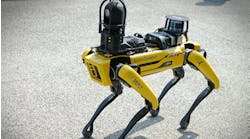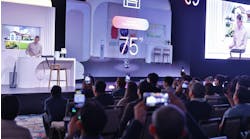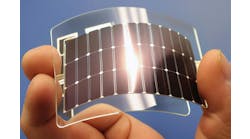Remember when LeVar Burton played Geordi La Forge on Star Trek: The Next Generation and wore his metallic VISOR?
What about if (or when) you awakened your inner Jedi with the new augmented reality Star Wars game that arrived on the market a month ago … with its own lightsaber and headset?
It’s inspiring gear, way cool, all those good things. But on the factory floor — you heard it here first — AR glasses and helmets will never go mainstream (nor, for that matter, will lightsabers). They’re too cumbersome to be part of our normal gear. They may be used for highly specialized tasks that are rarely carried out, but they aren’t the future of AR.
So, What Will be the Future of AR?
Let’s start with the device:
- To earn the sales volume, the credibility, and the standardized quality that are a prerequisite to widespread take-up, an AR device needs to be physically practical. Something that could be used daily, maybe all day, by people working in plants around the world — not just by an actor in a movie, or a kid playing a game.
- To manufacturers around the world who would need to invest, the device needs to feel like more than a fad. Something that will work day in and day out, and be supported the following year. And the year after that.
In other words, why not use a mature device? One that we trust? Better yet, why not use a mature device that we all already have?
The Future is the Phone
Well, the future is a phone or a tablet. And true, either could be said to be flawed. The image shown will seem less 3D, both less cool and less accurate a picture of the real world.
But.
Phones and tablets are mature devices. The kinks are worked out, we have brands we trust, we know how to use them. Our plant operators and line supervisors and quality inspectors will have no problem adapting to one — they already have. We won’t even have to make in investment in devices, everyone’s already got one.
It’s Awkward? How Do We Define Awkward?
You’ll read online criticism that it’s awkward to hold a phone in your hand to view a visual overlay of the insides of a machine, from which a repair technician can see how to remove a defective part. There’s truth in that. But again, helmets and glasses have some awkwardness too, quite a few more, in terms of risk, employee pushback, cost, and other considerations evoked by equipment that is not market-mature.
To put it another way, would you rather have a display on your dashboard, showing you the route you’re taking to your weekend destination? Or wear a special headset?
Here’s the Big Argument
Everybody is already enabled.
Let’s Talk Focus and Timing
The focus of what we can now do with VR and AR should be on the application, not on the device.
We get a head start, we’ll go further and faster if we start by using the device that everyone already has and trusts. So let’s talk about what we can do with AR using the smartphone as a device, and how we will gain, and what it will make possible.
Will technology and ingenuity eventually solve the issues of headsets and the separation from the physical world that they bring? Maybe. Time will tell, of course. But until then, the real progress to be made is in the proven technology we all have already — smartphones.










